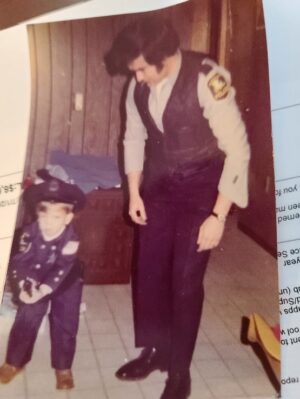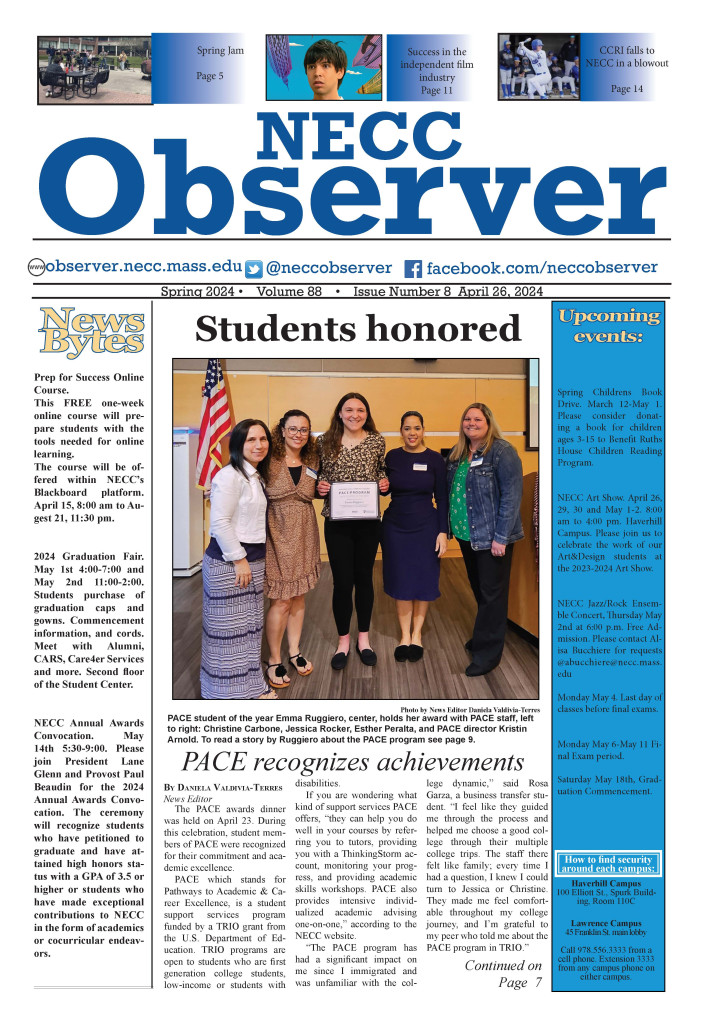Self-esteem has a big impact on your mental health. Body image can also affect your mental health. Body image is how you think and feel about your body. Having a negative body image can cause low self-esteem which can harm your mental health. Society wants everybody in the world to have the perfect body. Not being too overweight or underweight is awful and society tends to criticize those with not the perfect body Society thinks women are the only ones suffering from body image issues, Men are suffering too. Northern Essex Community College students recently expressed their thoughts on this topic.
Robert Smith is a student at Northern Essex Community College, in his third year of college. He is from Massachusetts. Smith states, “I do think that society cares too much about this. We are all told that we have to look and act the same but that is not the case. I believe that companies exploit this to sell their products and make profits.’’
Most people with a positive body image are more likely to have good mental health. People are constantly trying to look better, feel better, be better. Some turn to working out and subscribing to healthier diets and others develop not-so-healthy habits like starvation and consuming big amounts of alcohol. Either way, when a woman doesn’t have “that” body, society expects her to change. This shouldn’t be the case. This can cause sadness and insecurity among people which can lead to mental health problems. People’s self-esteem has changed since the pandemic, they feel more insecure and not happy since there are in lockdown and cannot find a way to workout. (Covid-19 and self-esteem). Smith says, “I think that it depends on the person. Many things make up self-esteem and I feel that it is individual-based.”
Some people overthink body image and get concerned about what others think of their bodies. Smith states “I believe that people do this to fit in with what is popular at the time.” It is also that people are identifying images on social media as a key factor that makes them worry about their body image. Conversations with their friends also have a major role in causing young people to worry.
Pop culture has the opportunity to teach people to have better self-esteem through movies and social media. Smith says, “I think that society can do this by having campaigns that focus on the qualities that make us up as people and by celebrating diversity in all aspects from the skin to body type.” Society can be hard to please since it can be very judgmental. Some people can get sad and depressed because of it.
Mariam Saldivar is a student from Northern Essex Community College. Her major is Journalism/communications. She is from the Dominican Republic. she currently lives in Lawrence Massachusetts. Mental health can occur from having anxiety from people judging them not being perfect enough. Society cares very much about being the best slim and in shape body, Saldivar agrees, about how people self-esteem has gone low during the pandemic, “Yes I do.” People have changed since the pandemic and they are trying their best or many, COVID-19 is an incredibly stressful and traumatic experience; stressful situations can have a huge effect on mental health. ‘’A majority of adults (61%) reported experiencing undesired weight changes since the start of the pandemic, with more than 2 in 5 (42%) saying they gained more weight than they intended. Of this group, adults reported gaining an average of 29 pounds (with a typical gain of 15 pounds. (American Psychological Association). “As COVID-19 has changed the idea of normality and raged through the world for an entire year, people have had more time to contemplate their self-esteem.
Weight change is a common symptom when people are having difficulty coping with mental health challenges. A majority of adults (61%) reported experiencing undesired weight changes, since the start of the pandemic, with more than 2 in 5 (42%) saying they gained more weight than they intended (American Psychological Association). Saldivar says, “Yeah. They’re nothing to do. A lot of us stuck at home. All that does is create the opportunity to overthink.”
Since the pandemic, a lot of us overthink and overanalyze certain situations and their body image can be their weight, and the way look causes depression and insecurity that can lead to mental health issues. This society will always care about body image Saldivar agreed,” Society does overthink about body image.”
There are many great ways to teach people who feel sad and depressed and insecure to have high self-esteem. Saldivar states, “I think we need to teach people that just because you have a different body type doesn’t mean that you are a horrible creature. People are different and that’s ok. Everybody should love themselves for who they are is important. People shouldn’t compare their looks with others, be happy with who they are.”
Bryan Fernandez is a student from Northern Essex Community College and his major in journalism/communications. He is from Bronx NY, and he currently lives in Lawrence Massachusetts. Society makes it hard to love yourself and it’s difficult to have high- esteem when everybody idolizes people in the media and social media with the perfect body. Fernandez states, “Absolutely, “As a whole, we have these unrealistic standards of what the perfect body’’ should be and we tend to beat ourselves if we don’t fit this standard.”
People want to have the perfect body because that’s is trendy and trying to be perfect and trying to remain flawless with your body can cause stress and anxiety. Which can lead to bad mental health problems. The COVID-19 pandemic has shaken the pillars of people’s lives. Face with quarantine school closures and social distancing, many people deprived of the everyday experiences that can build their self-esteem and sense of worth as a person. Having low self-esteem is a critical ingredient of people’s mental health issues. People with higher self-esteem tend to have happier lives, better relationships, and fewer symptoms of anxiety and depression. (American Psychological Association).
Fernandez stated what he thinks about people’s self-esteem changed during the pandemic. ‘Yes, as most of the people that I know GAINED weight during the pandemic, which is also understandable, A lot of people don’t have the drive to work out at home either, so it makes sense.’’ People have not become less active and more concerned about their well-being. People try not to get infected with Covid-19.
Some people overthink the way they look because they tend to compare body shape or their appearances to other people. Fernandez claims that “I do think people overthink their body image. I think people will never be genuinely satisfied with the way they look.” People need to gain self-love and not worry about what others think of them. Fernandez says, ‘’One way we can boost self-esteem is to start using real people of all sizes and shapes for marketing and advertising. The industry is fill with extremely skinny models for all types of advertising. It insinuating not only that their product is for the body type that is what is expect. I think there should more inclusion.’’ The media want to fill the world with products pills to make them thinner or more in shape. People get surgery on their faces to look better. They want to look different and not accept who they are. People are never going to be satisfied with what they are and that builds stress and anger that cause mental health issues with not being happy with who they are.
The most important thing society can do is teach people to love themselves help people to build confidence. They won’t feel depressed about how they look and develop health problems with insecurities.


